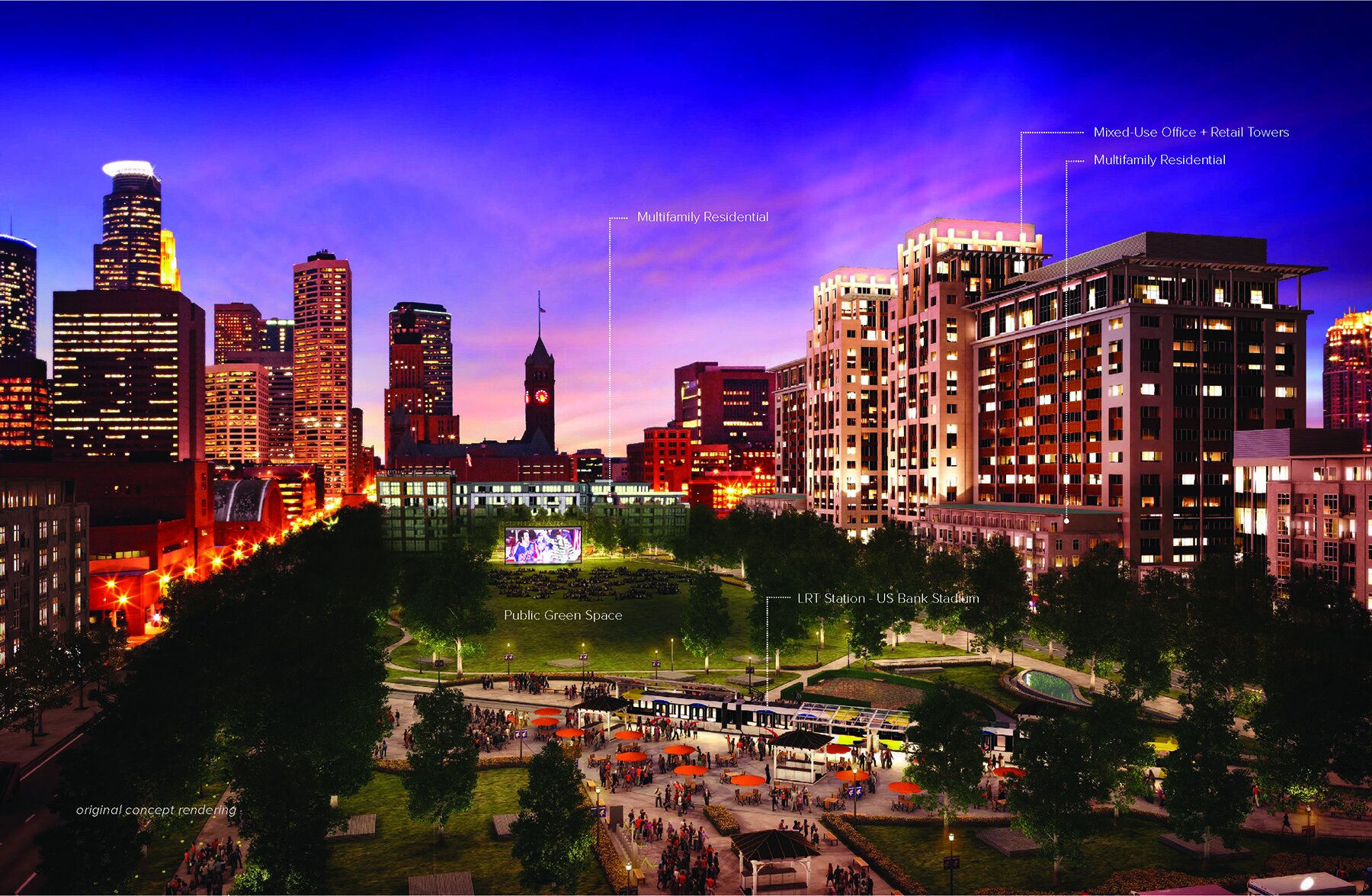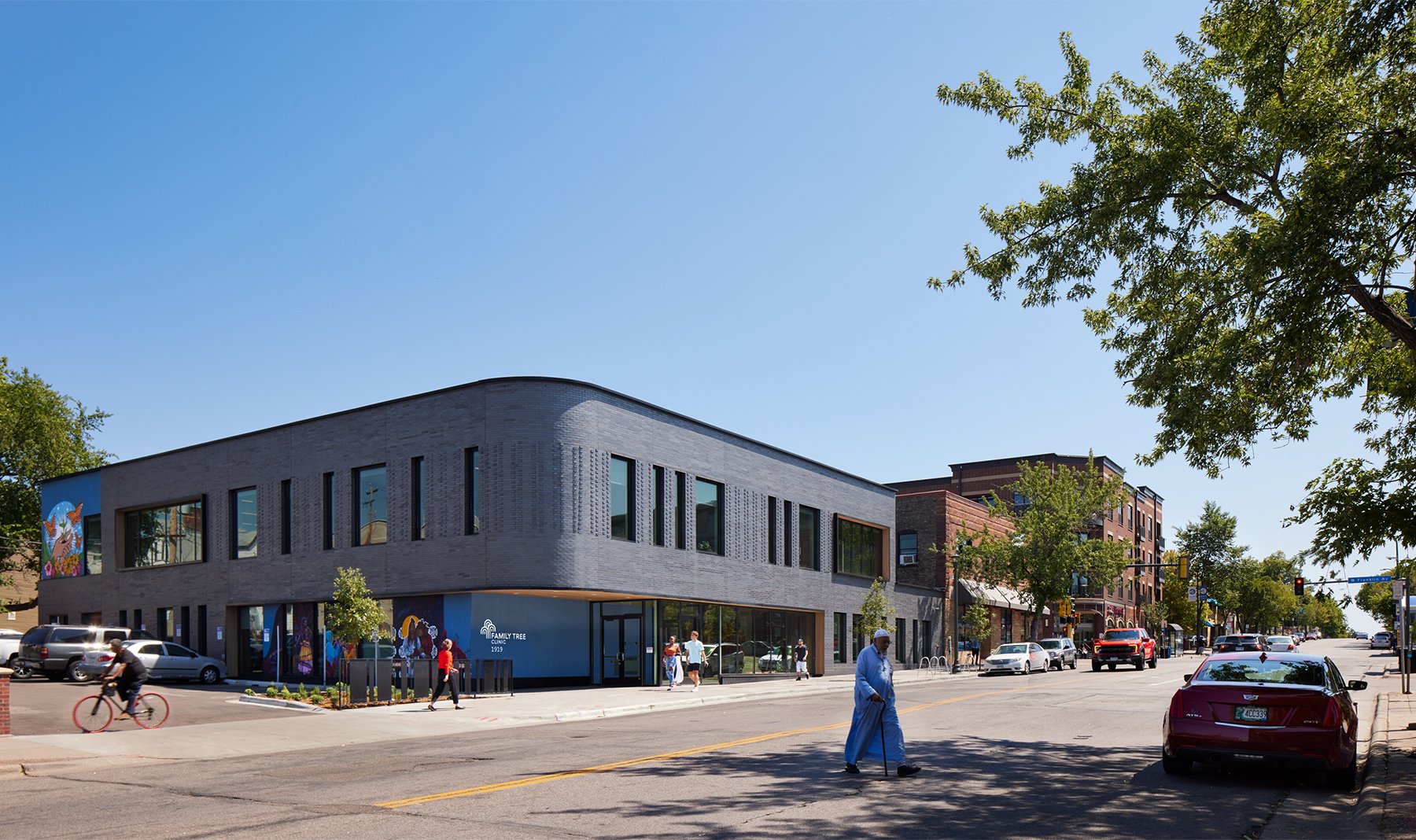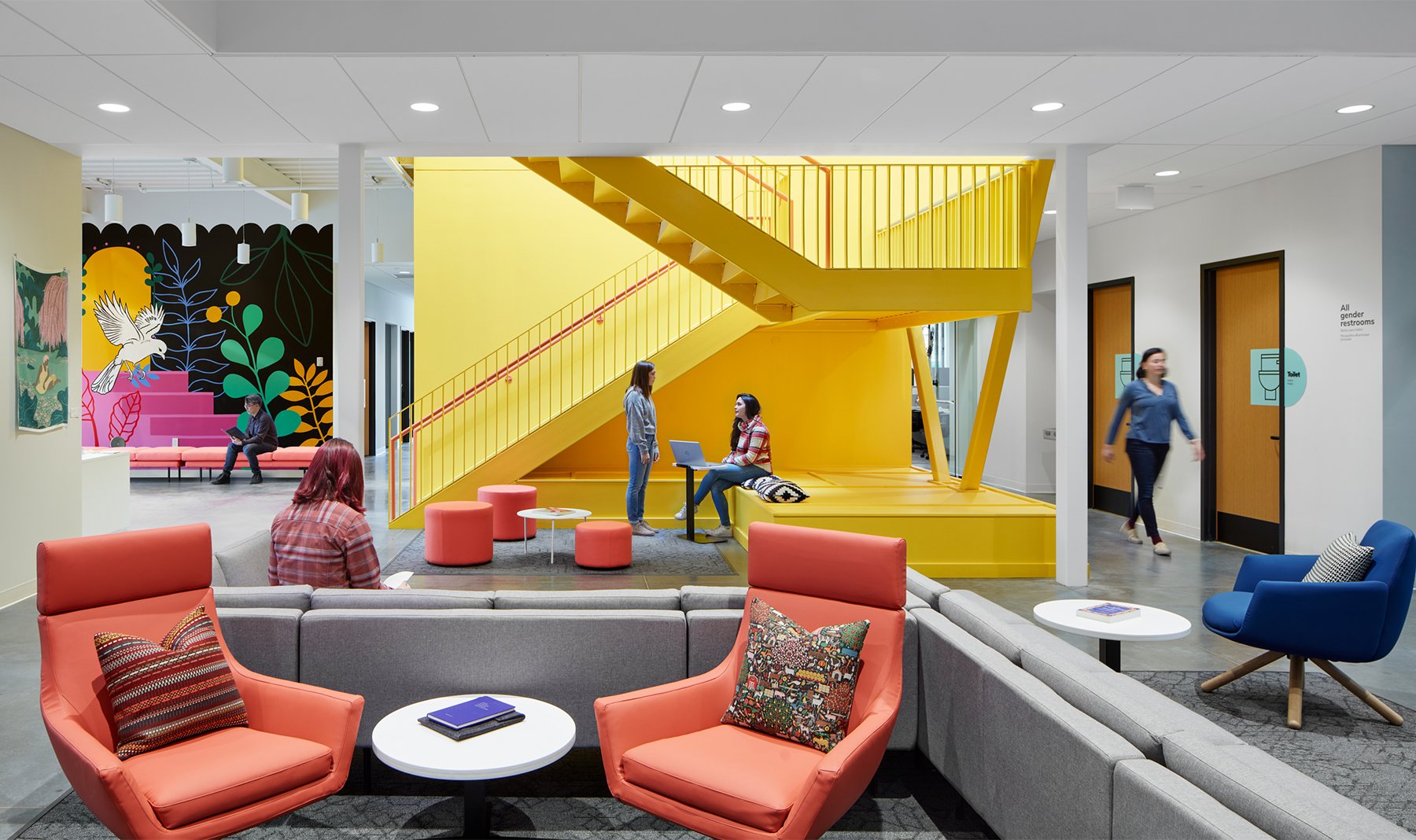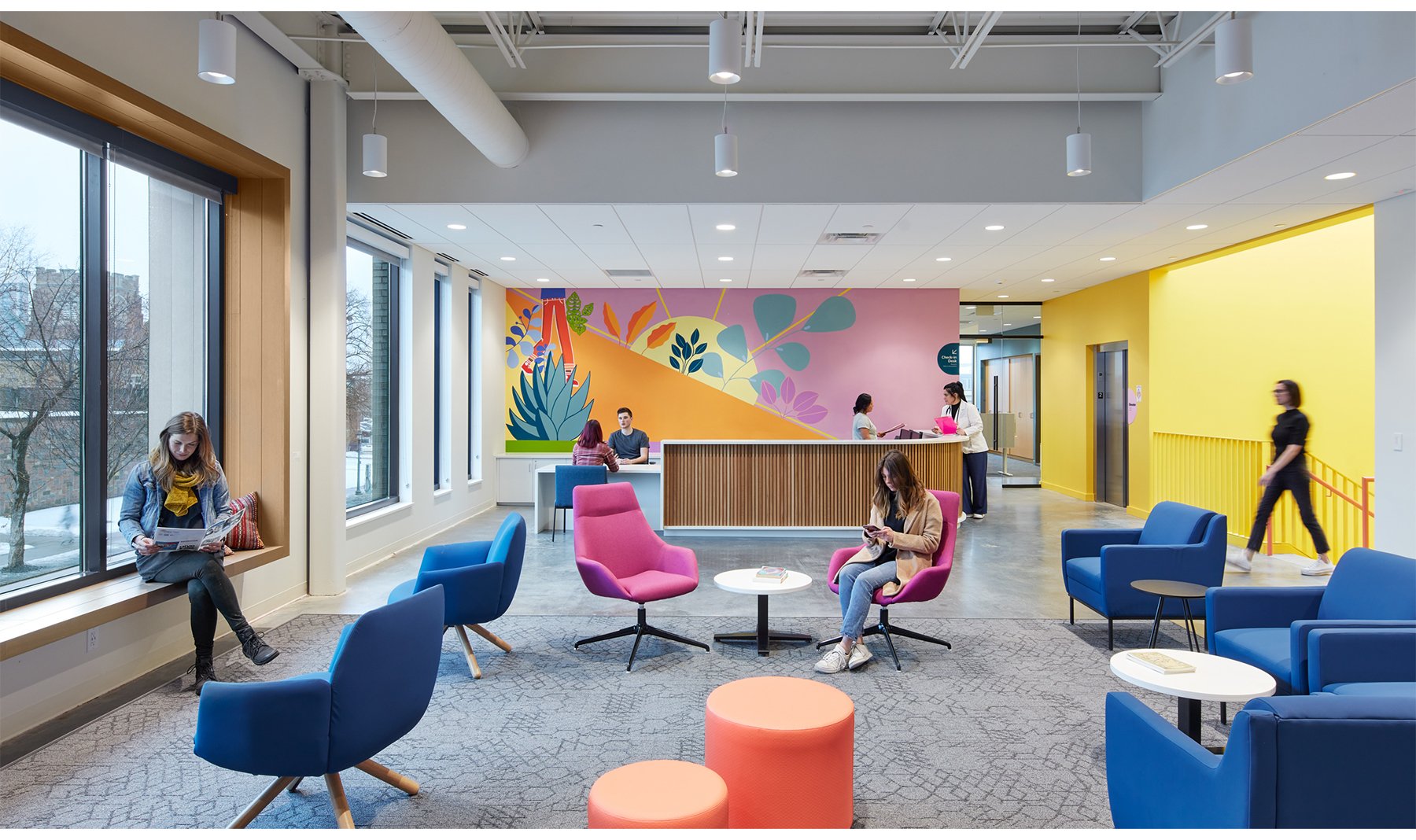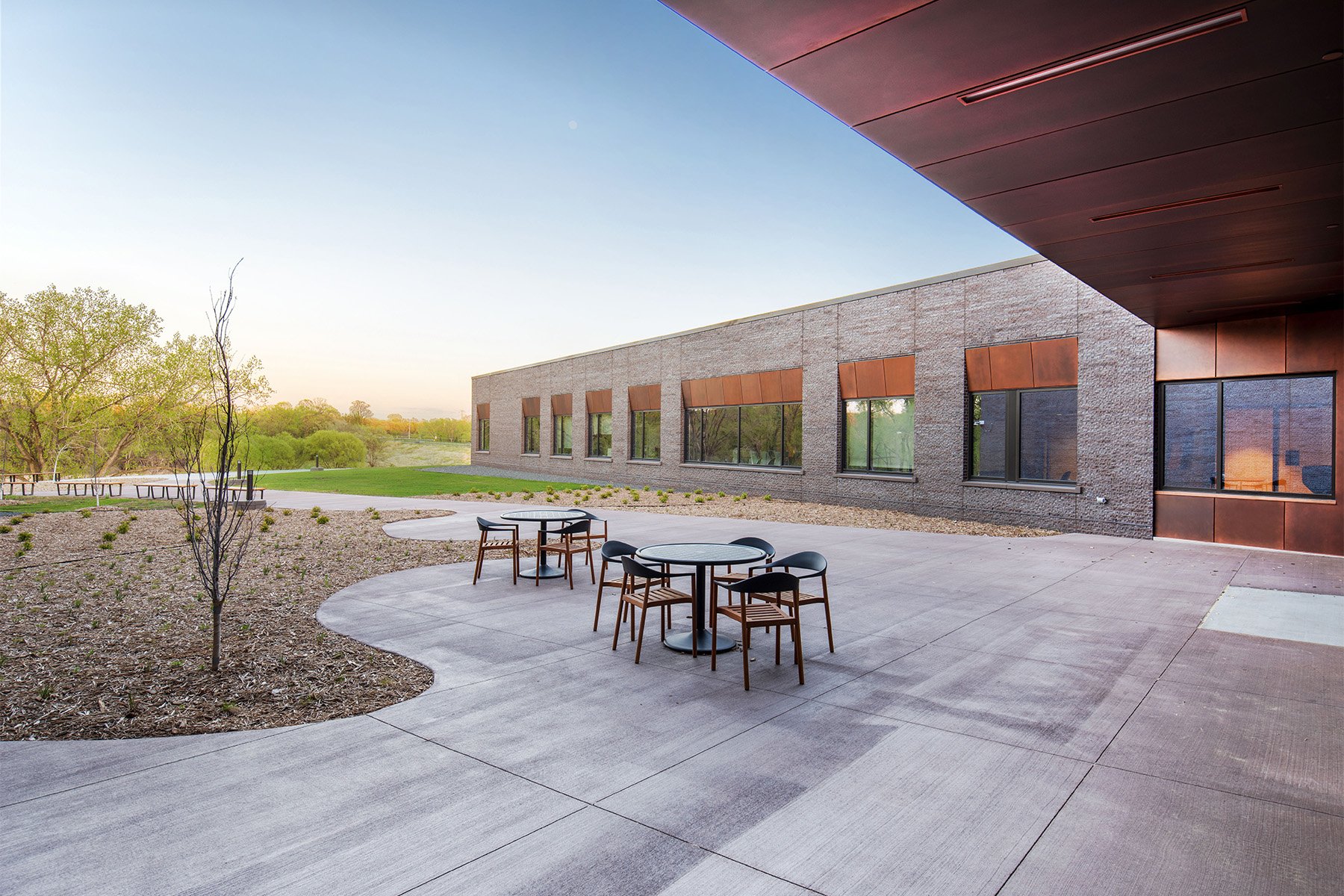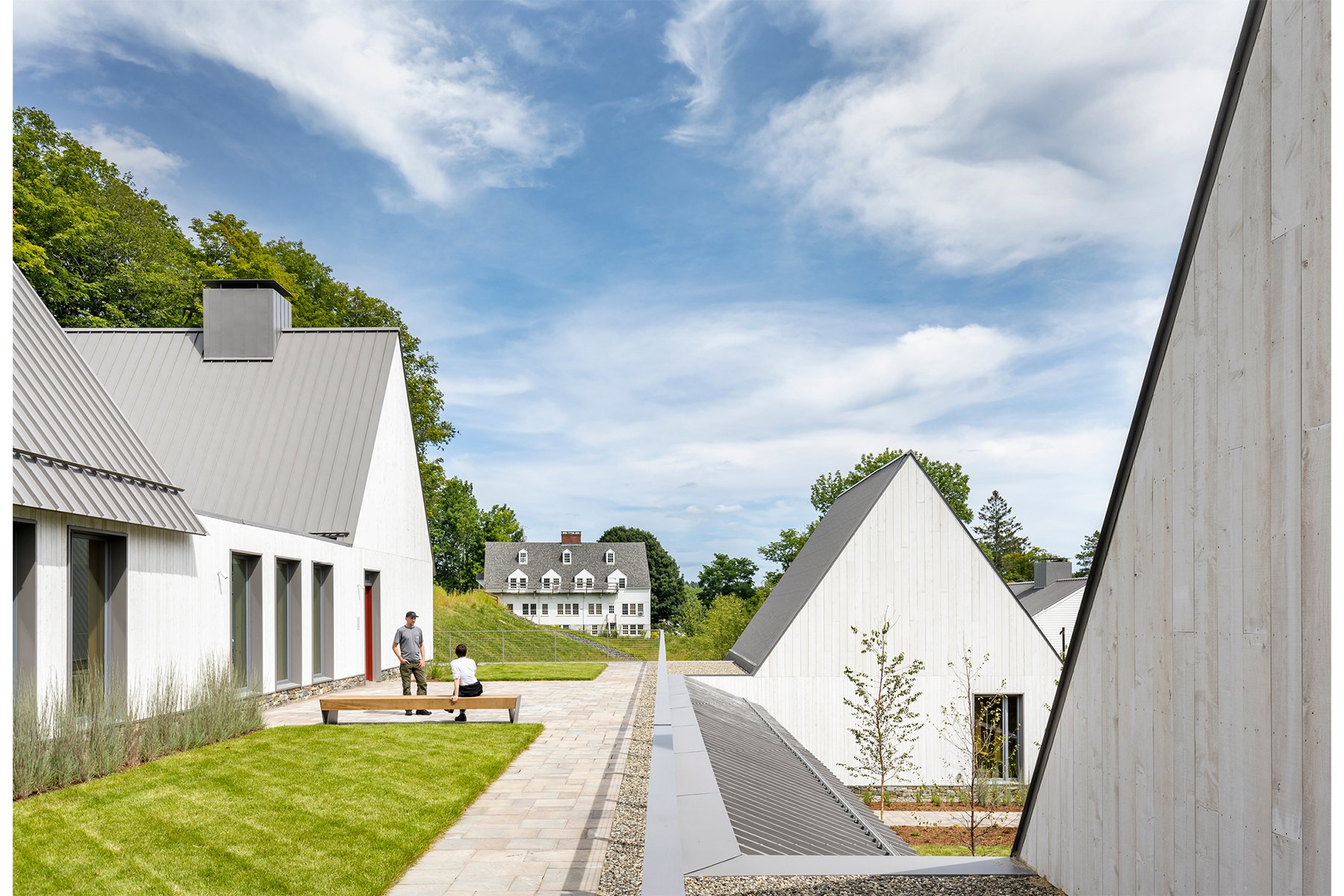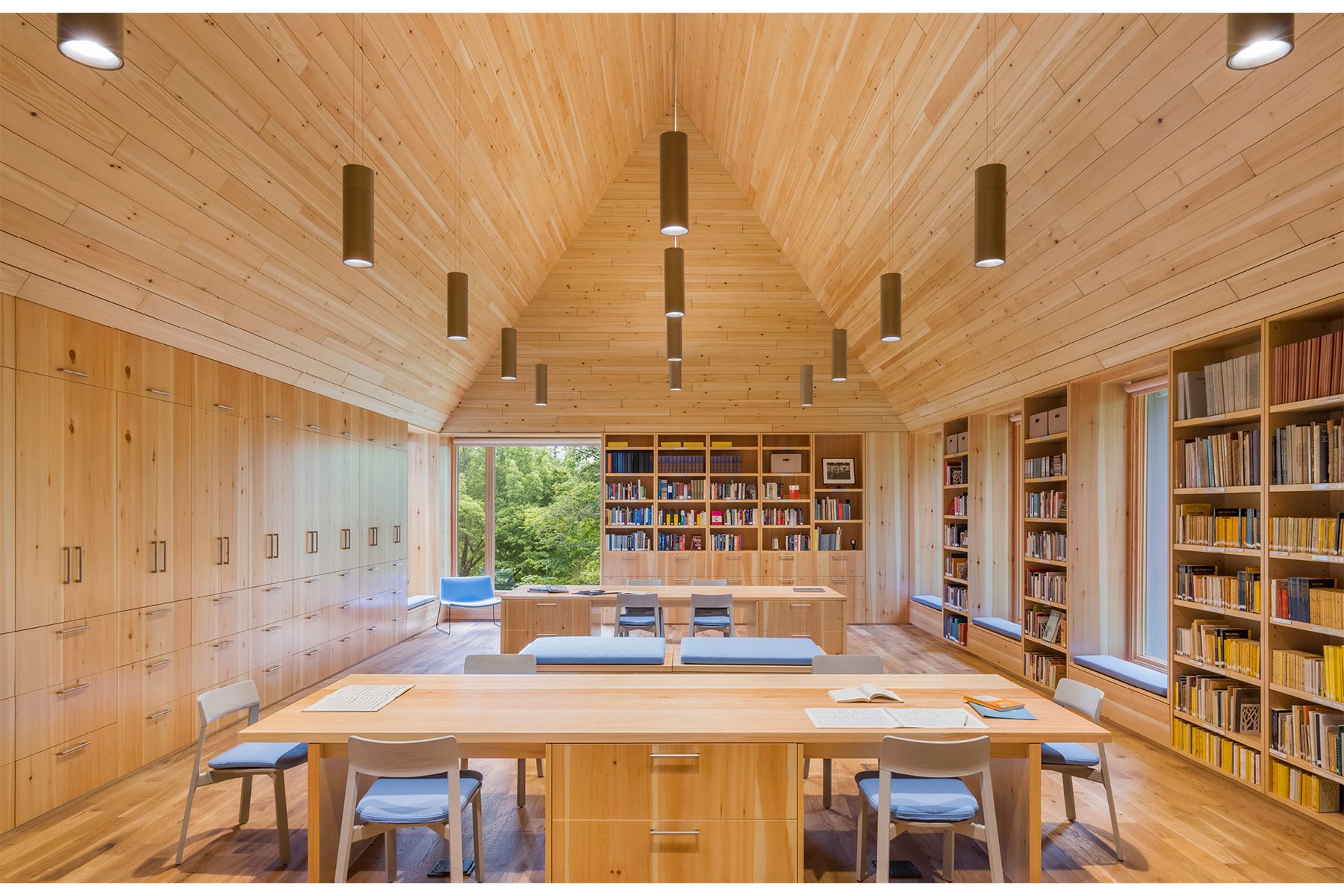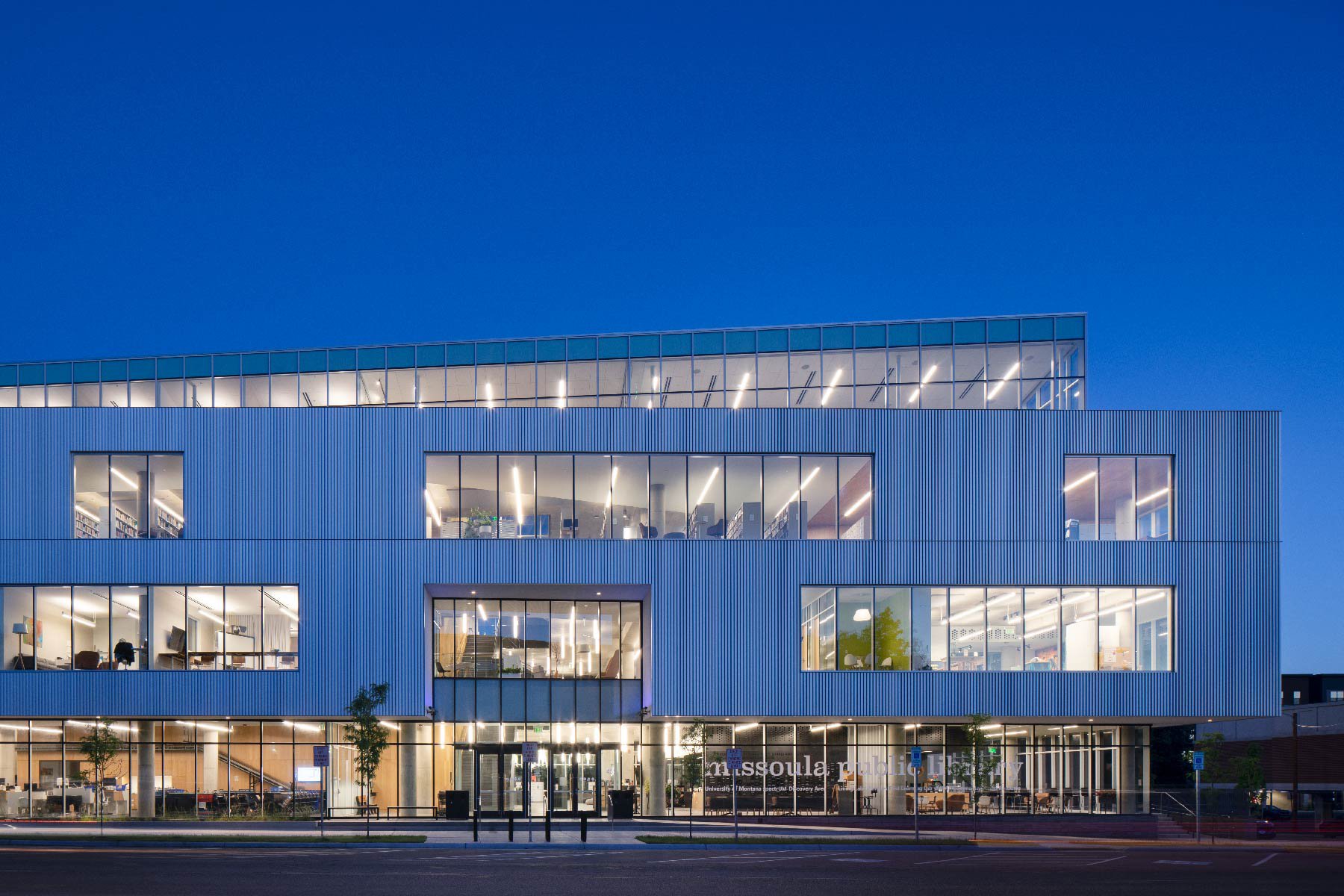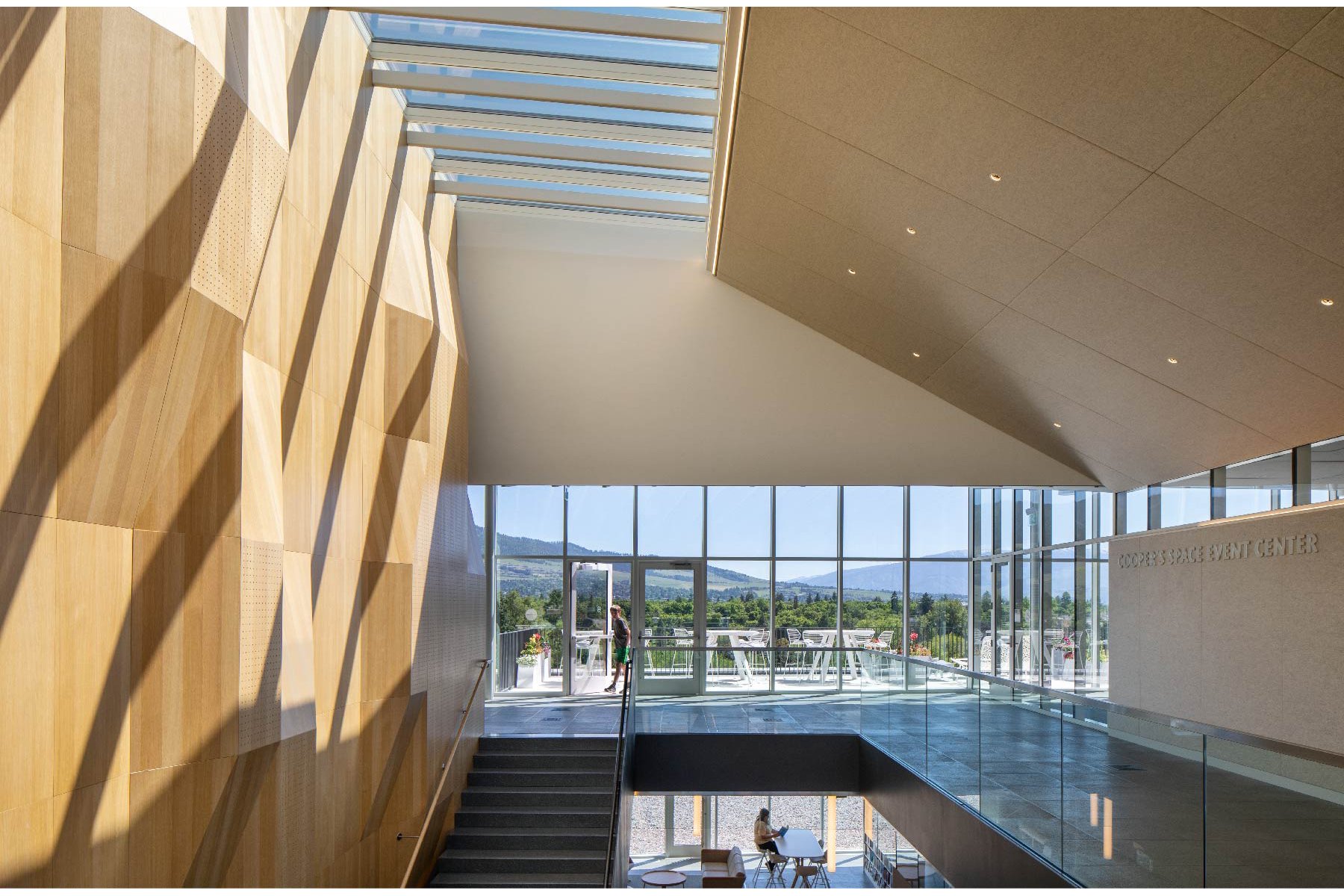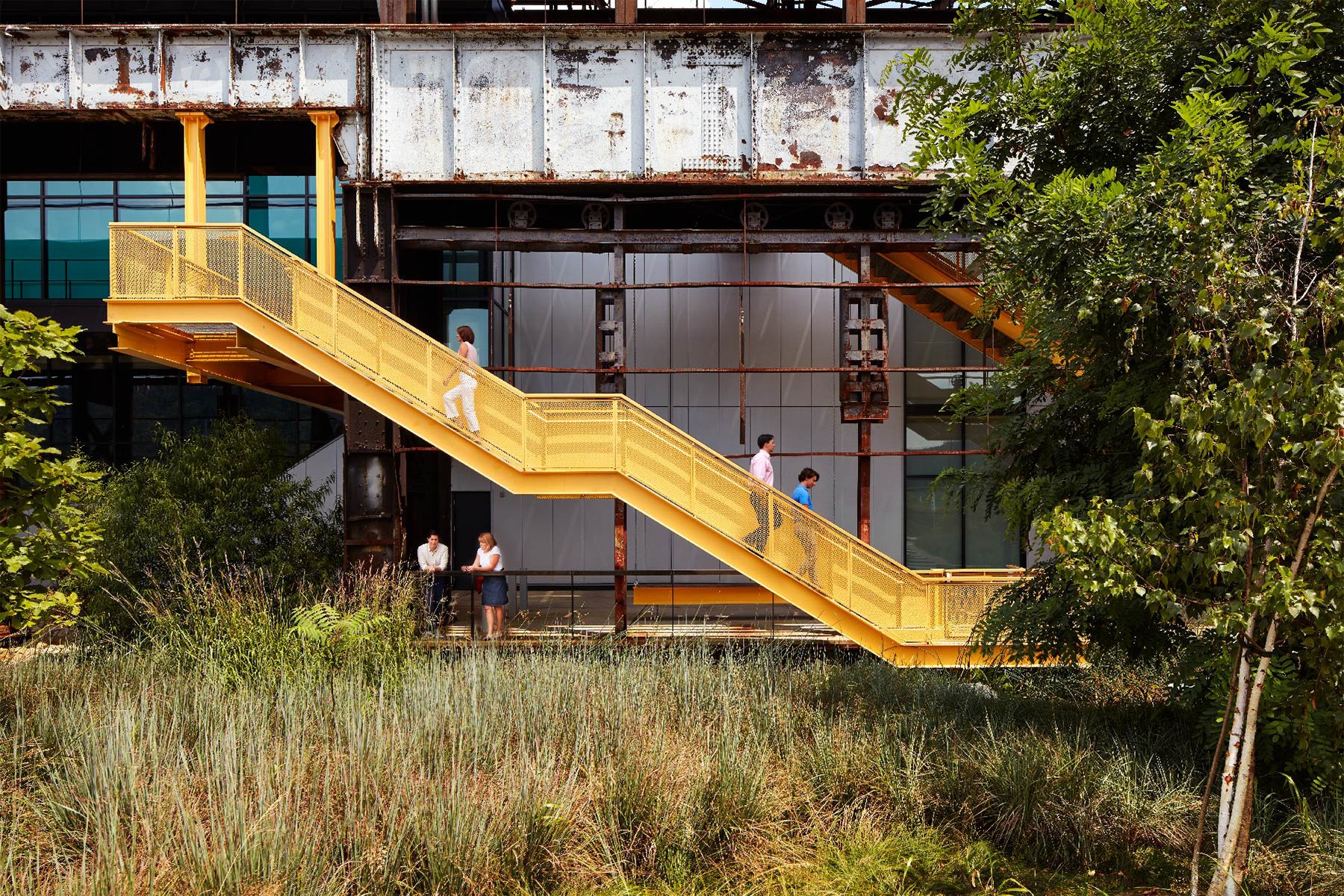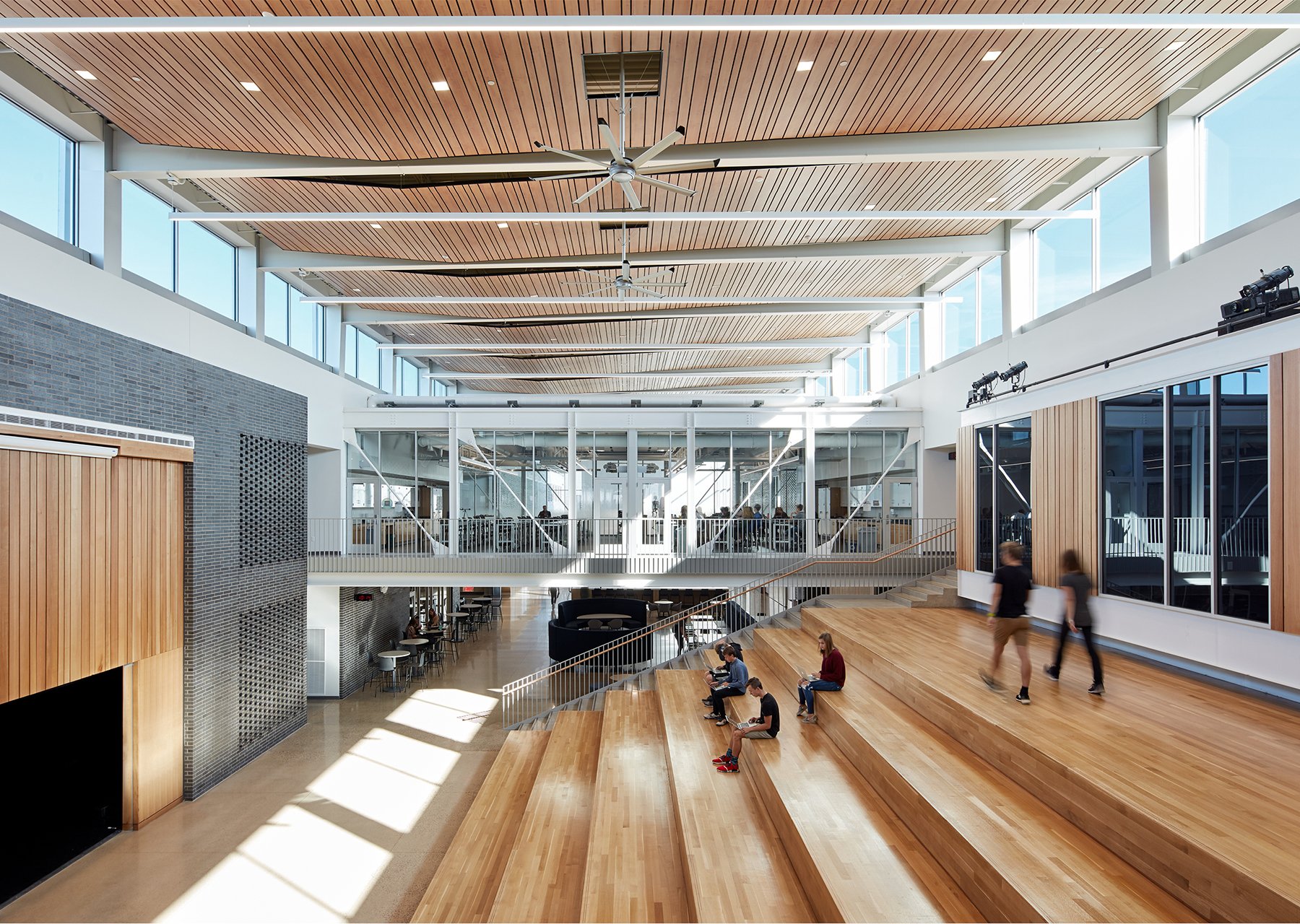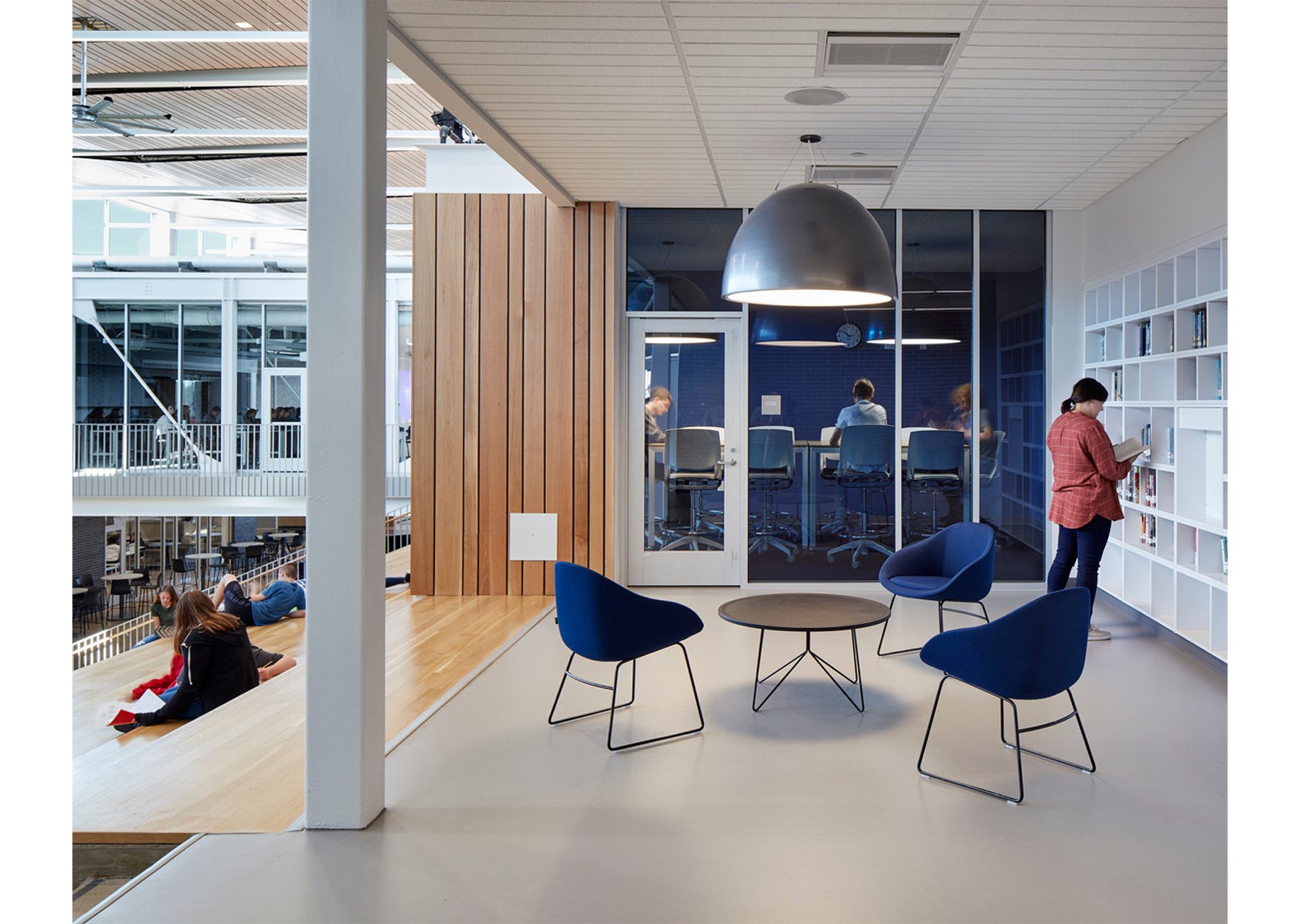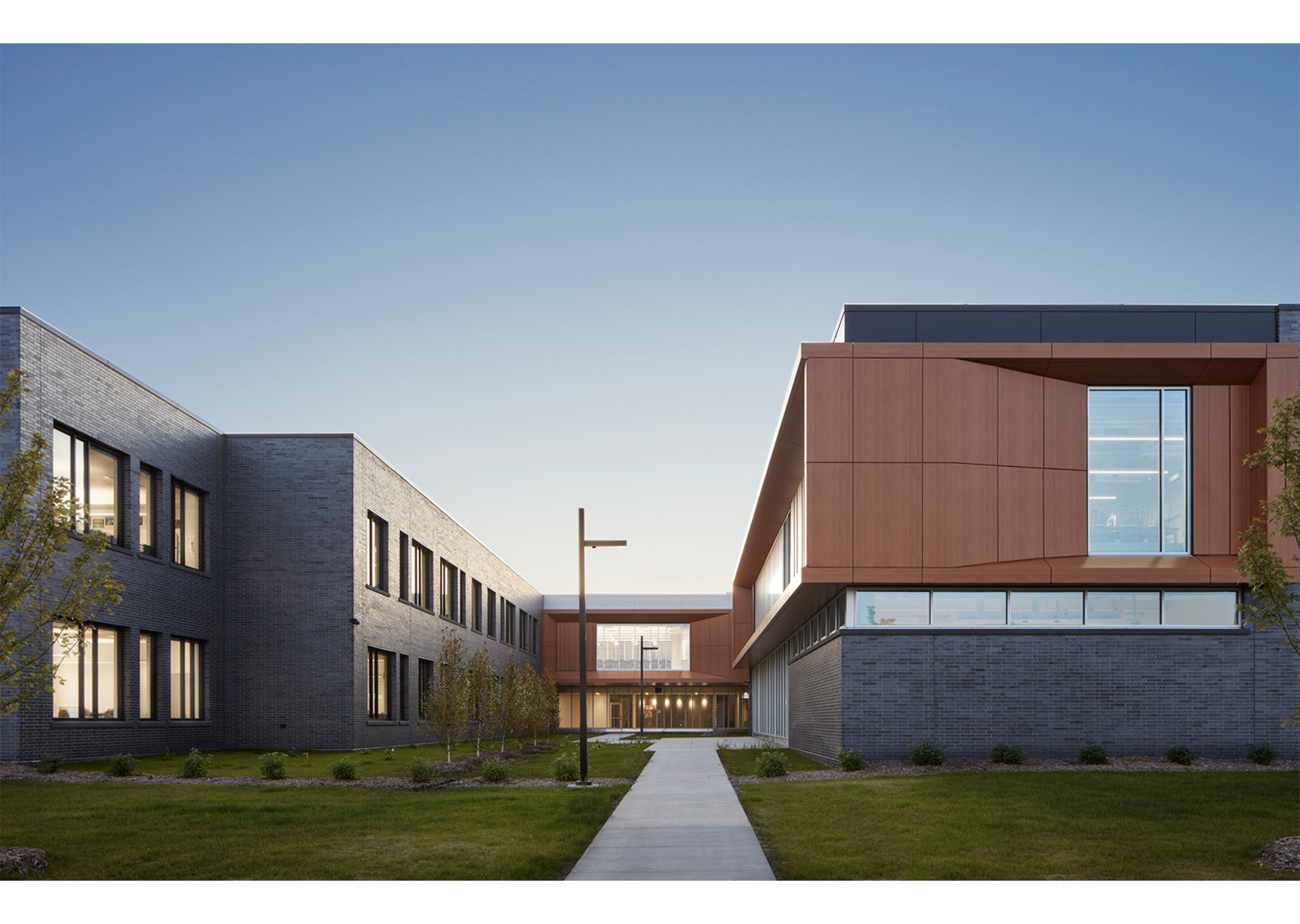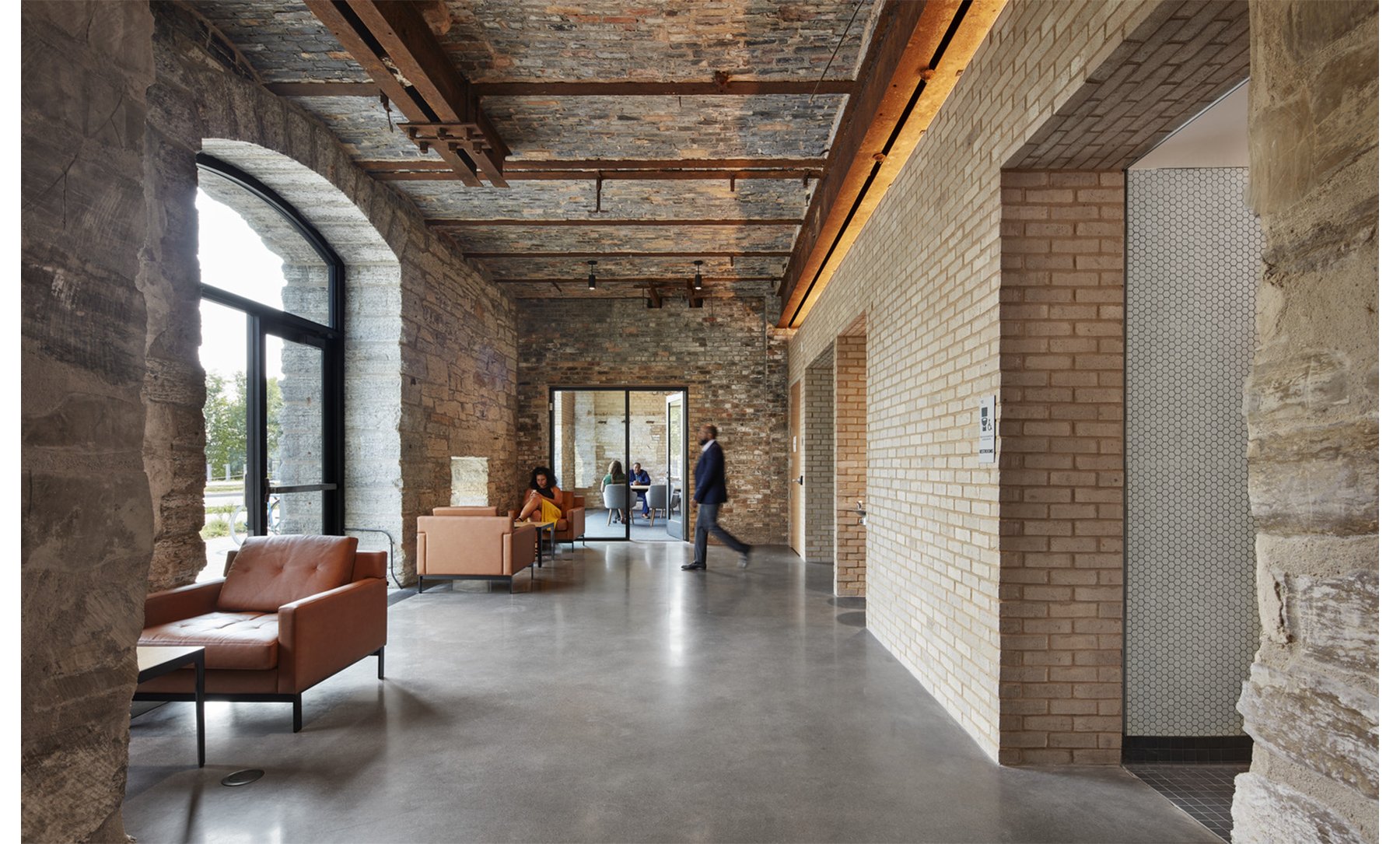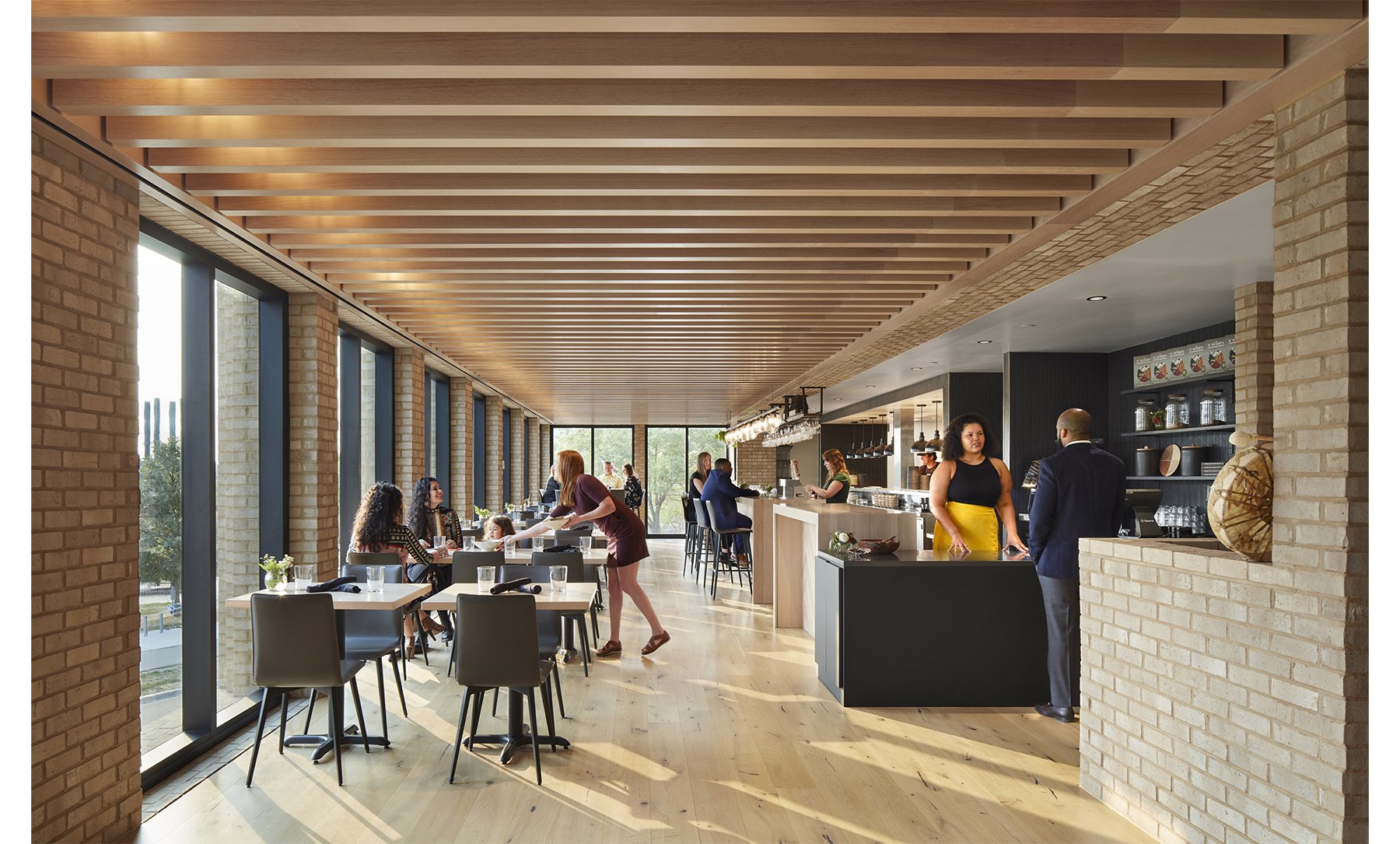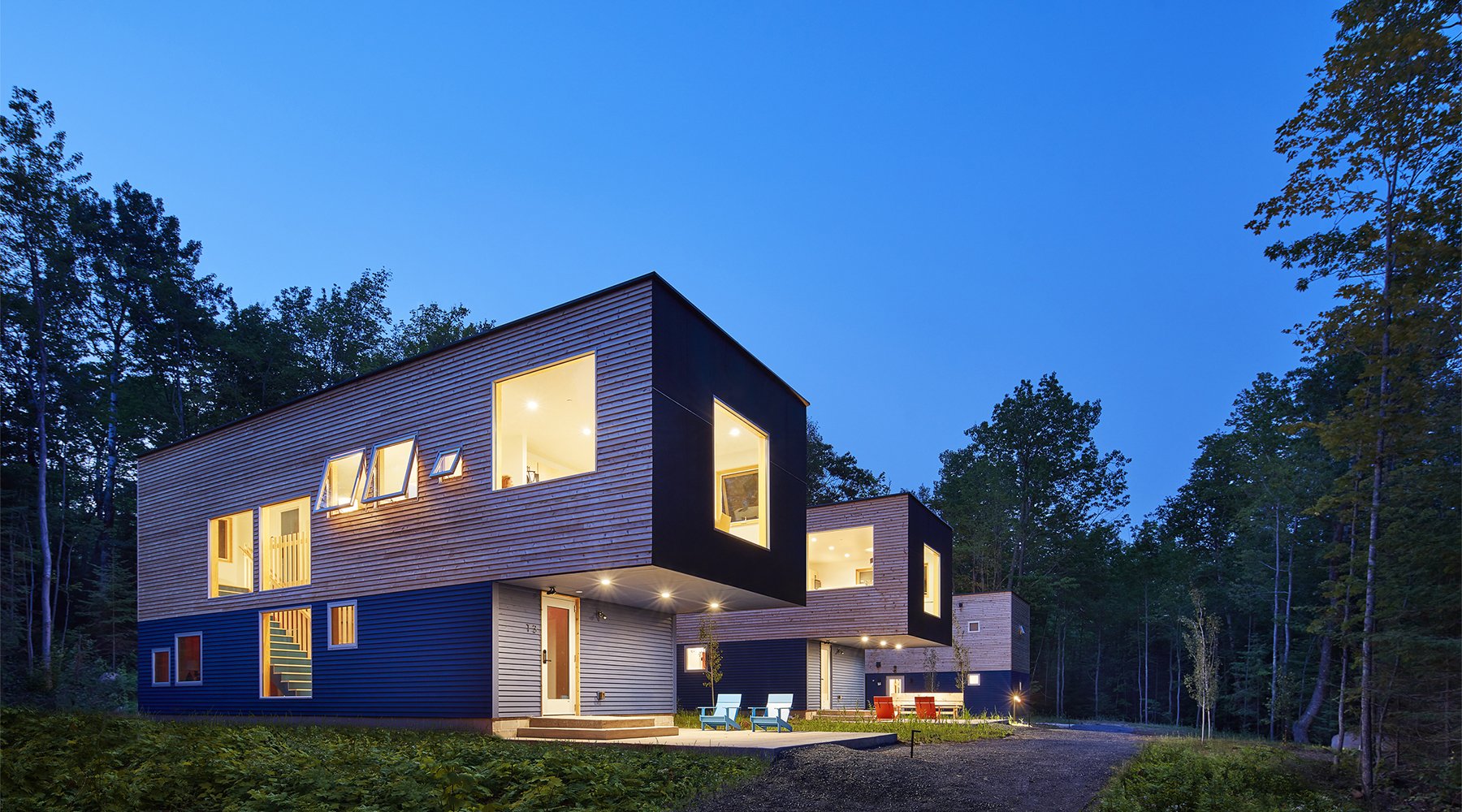The Nine Recipients of 2022 AIA Minnesota Honor Awards and Commendations for Design Excellence
By Chris Hudson | December 15, 2022
Rehearsal Room B in the new Marlboro Music Reich Hall in Marlboro, Vermont, designed by HGA. Photo by Albert Vecerka/ESTO.
SPOTLIGHT
In an awards celebration on December 2, AIA Minnesota announced the winners of its annual Honor Awards and Commendations for Design Excellence, the state’s most prestigious recognition for buildings designed by Minnesota architects. The 46 submissions were reviewed by a panel of three acclaimed architects from around the country and evaluated using the AIA Framework for Design Excellence. The Framework outlines a holistic approach to quality design in 10 measures: Design for Integration, Equitable Communities, Ecology, Water, Economy, Energy, Well-being, Resources, Change, and Discovery.
The 2022 jury selected three projects for an Honor Award, for demonstrating excellence in two or more Framework measures, and six additional entries for a Commendation for Design Excellence, for a notable achievement in a single Framework measure.
This year’s judges were Philip Chen, FAIA, of Annum Architects in Boston; Lawrence Speck, FAIA, of Page Architects in Austin, Texas; and Chandra Robinson, AIA, NOMA, of LEVER Architecture in Portland, Oregon.
“One of the things we were looking for in a winning entry was significant impact—impact for the users, the neighborhood, the city, or the community,” said Chen. “Among our selections are several projects that look like the architects took what may have been a conventional project brief and went beyond it with a very special design.”
Additional comments from the jury are included in the project highlights below.
Photo by Paul Crosby. Rendering and plan by Ryan A+E.
Downtown East Urban Master Plan
Minneapolis, Minnesota
Architect: Ryan A+E
Clients: City of Minneapolis; Wells Fargo Bank; Minnesota Sports Facilities Authority; Downtown East Investors; RR MPLS DR; Ryan Companies; Weidner Apartment Homes
Commendation for Excellence in Design for Economy
The Downtown East Urban Master Plan set the stage for the largest redevelopment project in Minneapolis in recent decades, infilling five underutilized blocks between the Central Business District, the Historic Mill District, and U.S. Bank Stadium with a 4.2-acre public green called the Commons, apartment buildings, mixed-use office towers, a hotel, and a parking ramp. The implementation of the master plan has created a sense of place for a section of downtown formerly characterized by surface parking and has spurred additional transit-oriented development in the area.
Jury comment: “We were incredibly pleased to see architects involved in this scale of work. The master plan is beautifully orchestrated for both rich community life and economic success, and smartly integrated with mass transit and the surges of people that come for game day. We were also impressed by the degree to which the plan was implemented as conceived.”
Photos by Gaffer Photography.
Family Tree Clinic
Minneapolis, Minnesota
Architect: Perkins&Will
Client: Family Tree Clinic
Commendation for Excellence in Design for Economy
This 17,000-square-foot nonprofit clinic provides specialized care and services for LGBTQ+ individuals. A relatively simple, economical building, it nonetheless expresses its intentions to be a permanent presence in its urban neighborhood with an elegantly detailed brick exterior and healing-themed street and courtyard murals by BIPOC and LGBTQ+ artists. The interiors are equally colorful, with vibrant murals, stairs, and furnishings in the common areas. The trauma-informed clinical spaces balance privacy and a sense of safety with plentiful natural light.
Jury comment: “We like the word economy for this project, in the sense of how much it accomplishes with simple design moves. On the exterior, patterns created by window sizes and subtle brick textures give the building a strong presence on the street. And the highly adaptable interiors, arranged around a skylit yellow stair, offer patients a variety of inviting seating.”
Photos 1 and 2 by Leo A Daly. Photo 3 by Gaffer Photography.
Hennepin County Medical Examiner Facility
Minnetonka, Minnesota
Architect: Leo A Daly
Client: Hennepin County
Commendation for Excellence in Design for Well-Being
This low-slung, brick-clad building is one of the most innovative facilities in the nation for forensic death investigation and training. Nestled into a woodland landscape, its 64,000 square feet of laboratories and administrative spaces are designed to support doctors and staff who experience high levels of mental stress and physical strain in their daily work. The architects focused on daylighting, advanced indoor air quality measures, and ergonomics, as well as providing indoor and outdoor spaces with framed views of the surrounding prairie, wetlands, and forest.
Jury comment: “With its brownish gray brick and weathered-steel retaining walls, this handsome building seems to grow from the earth. Generous views out over the rolling landscape lend interior spaces and the courtyard an air of tranquility. We had a strong impression that the building helps sustain the mental, emotional, and social health of the users, inside and out.”
Photos by Albert Vecerka/ESTO.
Marlboro Music Reich Hall
Marlboro, Vermont
Architect: HGA
Client: Marlboro School of Music
Honor Award for Excellence in Design for Integration and Well-Being
Reich Hall is the addition of rehearsal spaces, a music library, staff offices, and gathering spaces for Marlboro Music, a renowned seven-week summer retreat for advanced classical training and musicianship. Inspired by both the Cape Cod cottage and the campus’s 19th-century farm structures, the new building is composed of four gabled forms clad in white-washed cedar siding, arranged around a courtyard green. In the wood-lined rehearsal rooms, sections of the walls tilt inward to prevent flutter echoes. The archive library features a similarly rural-modern simplicity with its wood ceiling, walls, cabinetry, and floor.
In early 2023, Reich Hall also won an AIA Architecture Award, widely considered the highest honor for contemporary architecture designed by U.S.-licensed architects.
Jury comment: “The architects seamlessly extended the ethos of this classic New England farm setting with an ensemble that resonates with the history and character of the place. From the intimate rehearsal rooms to the inviting courtyard, this project seems to have just the right combination of modesty and humility—and at the same time dignity and real enterprise—for a pursuit as aspirational as music.”
Photos by Lara Swimmer Photography.
Missoula Public Library
Missoula, Montana
Architect: MSR Design with A&E Design
Client: Missoula Public Library
Commendation for Excellence in Design for Equitable Communities
This library’s unique setting—in a downtown nestled in a valley at the hub of five mountain ranges—inspired its design. The exterior concept evokes the regions’ geological layers, while the glass and metal cladding reflect Missoula’s fast-changing weather. Inside, an atrium stair offers a kind of mountain climb leading to an expansive rooftop patio view of Mount Sentinel. The library is also unique for the mix of free community resources it houses: Missoula Community Access Television, Families First Learning Lab, and the University of Montana spectrUM Discovery Area and Living Lab.
Jury comment: “I imagine when you’re standing outside this building, you’re excited to come in, because you can see the variety of activity inside. The design also has a nice balance between the shiny modern exterior and warm interior elements, like the faceted, perforated wood panels in the atrium and the richly colored community spaces for kids.”
Photos by Gaffer Photography.
RIDC Mill 19
Pittsburgh, Pennsylvania
Architect: MSR Design
Client: Regional Industrial Development Corporation
Commendation for Excellence in Design for Change
RIDC Mill 19 is the repurposing of the steel skeleton of an abandoned steel rolling mill on the Monongahela River as an outer shell for new high-tech office, lab, and manufacturing facilities. This adaptive-reuse project removed the mill’s failing sheet-metal skin, used the sloped roof to install the largest single-slope glass PV array in the U.S., and created a network of plazas, elevated walkways, balconies, and gardens around the new structures that immerses tenants and visitors in the industrial ruins. Mill 19 is the first completed project within Hazelwood Green, the redevelopment of a 170-acre brownfield site into a mixed-use innovation district.
In early 2023, RIDC Mill 19 also won an AIA COTE Top Ten Award, the most prestigious honor in the country for sustainable design excellence.
Jury comment: “We couldn’t have found a better project that looks at time and how it moves and how architects deal with old and new. Preserving this Rust Belt history as a workplace and reusing the structure for a solar array combines the past, present, and future in such a compelling way. What an inventive approach, with a good perspective on the cycle of change.”
Photos by Gaffer Photography.
Sartell High School
Sartell, Minnesota
Architect: Cuningham
Client: Sartell–St. Stephen Independent School District 748
Honor Award for Excellence in Design for Economy, Well-Being, and Integration
This crisply contemporary high school in central Minnesota is anchored by a soaring, light-filled student commons with bridges, tiered seating, and a student-run coffee shop and school store. In lieu of a dedicated media center, the design integrates bookshelves and media technology into the common areas for increased use by students. Outside the general learning neighborhoods and specialized learning spaces, students can choose between small and medium-size group rooms, open lounge space, meeting tables, and outdoor seating for studying and socializing.
Jury comment: “Schools often use color very graphically, but here the use of natural tones and finishes results in a refined setting that dignifies the academic and career technical education activities in the building. The large community spaces are beautifully designed, and they connect to a variety of small and medium-sized spaces so that the scale of the student is never lost.”
Photos by Gaffer Photography.
Water Works Park Pavilion
Minneapolis, Minnesota
Architect: HGA
Clients: Minneapolis Park and Recreation Board and Minneapolis Parks Foundation
Honor Award for Excellence in Design for Integration, Water, and Resources
Built on and incorporating the foundations of late-19th-century flour mills on Minneapolis’s central riverfront, this two-level park building aims to reflect the site’s Indigenous, industrial, and post-industrial histories through preservation and interpretation. On the upper level, Owamni, Minnesota’s first full-service Native American restaurant, enjoys a panoramic view of the river and the Stone Arch Bridge. Below, on the parkway level, are visitor support spaces including all-gender restrooms, a mother’s room, and a meeting space. Everywhere, the lines between new and historic masonry are clear.
Jury comment: “This relatively modest park building plays an oversize role at a critical moment along the Mississippi River, with the falls and the Stone Arch Bridge. It integrates beautifully with the mill ruins, the adjacent plazas and green space, and the recreational paths along the river. The brick entry arch really draws you in, and the experience of the 19th-century masonry in the lower level is powerful.”
Photos by Gaffer Photography.
Wild Rice Retreat
Bayfield, Wisconsin
Architect: Salmela Architect
Client: Heidi Zimmer
Commendation for Excellence in Design for Well-Being
Wild Rice Retreat is the reimagining of a former restaurant on a wooded shore above Lake Superior into an arts and wellness center with the addition of 19 guest cabins and three additional buildings for yoga and sauna or meditation. The new structures, designed by the same architects who had shaped the restaurant nearly 20 years earlier, feature the simple forms and cedar lap siding of Scandinavian boathouses and farm buildings, with interiors lined in locally sourced basswood. The three types of cabins range in size from 312-square-foot Rice Pods to 1,548-square-foot, two-level Treehaus units.
Jury comment: “We appreciated the different scales of the residences, the large square windows that immerse occupants in the surrounding foliage, and the use of bright colors for the staircases, interior doors, and lower exterior cladding of the larger units. The whole campus exudes a sense of place and discovery that supports well-being.”



